CES 2020: Flying cars, tracking everywhere and a potato
Posted; January 24, 2020
Another year, another CES. Tom Carter, CTO of Ultraleap, can’t quite believe this is his seventh annual pilgrimage to Las Vegas.
The first time I went to CES we had a grand total of three full-time employees (including me). Things were a bit different this time round, but CES was as noisy, buzzy, and chaotic as ever.
Few good products are actually launched, but concepts and prototypes are everywhere. It’s a great place to piece together trends. Here is what I think this year’s CES told us about the areas I’m particularly interested in: automotive, XR, haptics ... and potatoes.
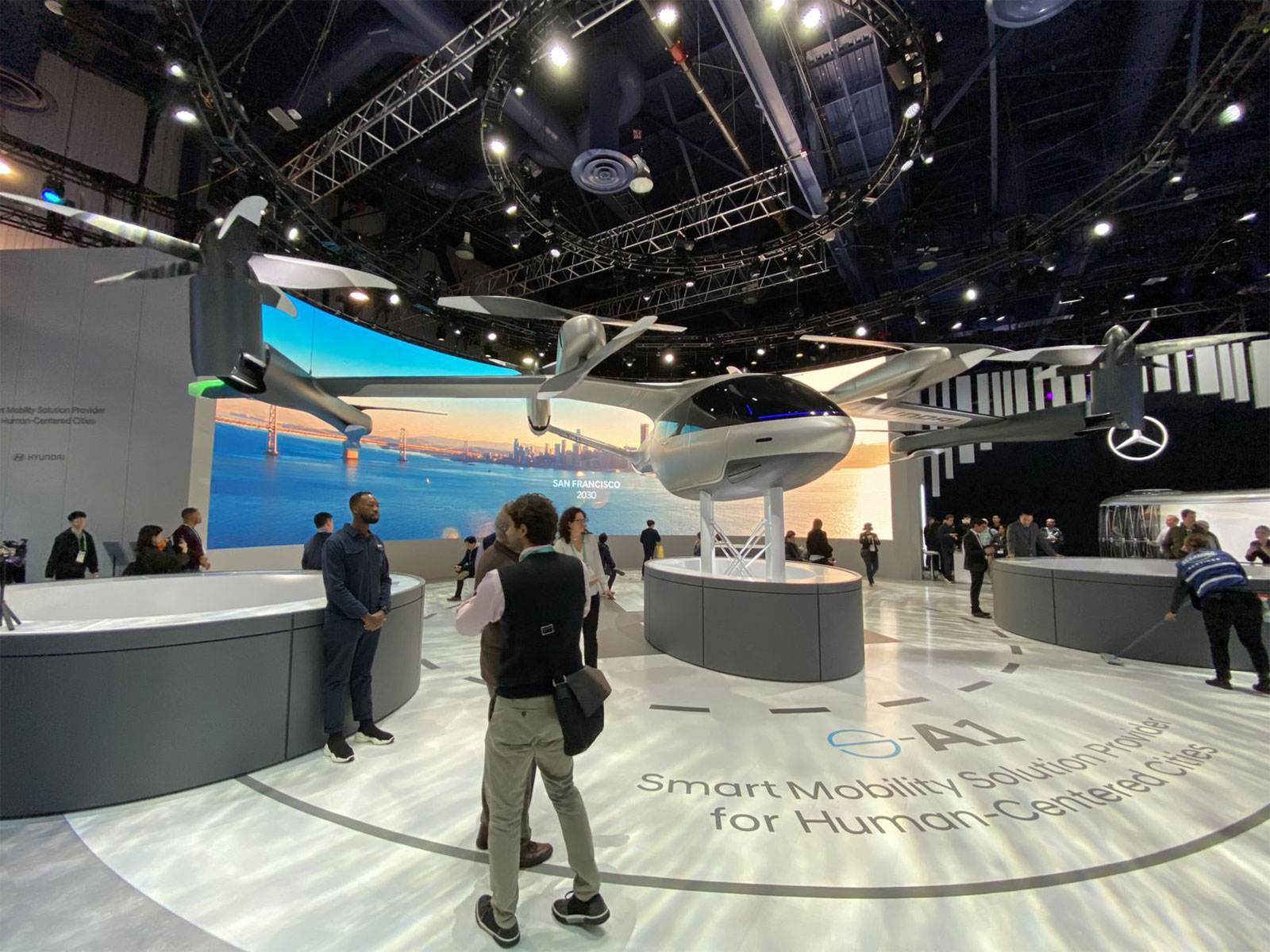
Automotive was about flying cars and quality cockpit experiences
CES is now one of the biggest automotive shows, and the two big themes were flying cars and clean, spacious HMI concepts.
There were some single-seater drones, but my favourites were the huge electric rotorcraft. The one from Hyundai had a long concept video in partnership with Uber. Pimax widescreen VR headsets were used so you could experience a ride.
I know concept cars have had clean, sleek cockpits for years, but it now feels like a serious indicator of design direction. Physical controls are disappearing, and a much greater value is being placed on the effect of a cockpit on drivers’ and passengers’ mental states.
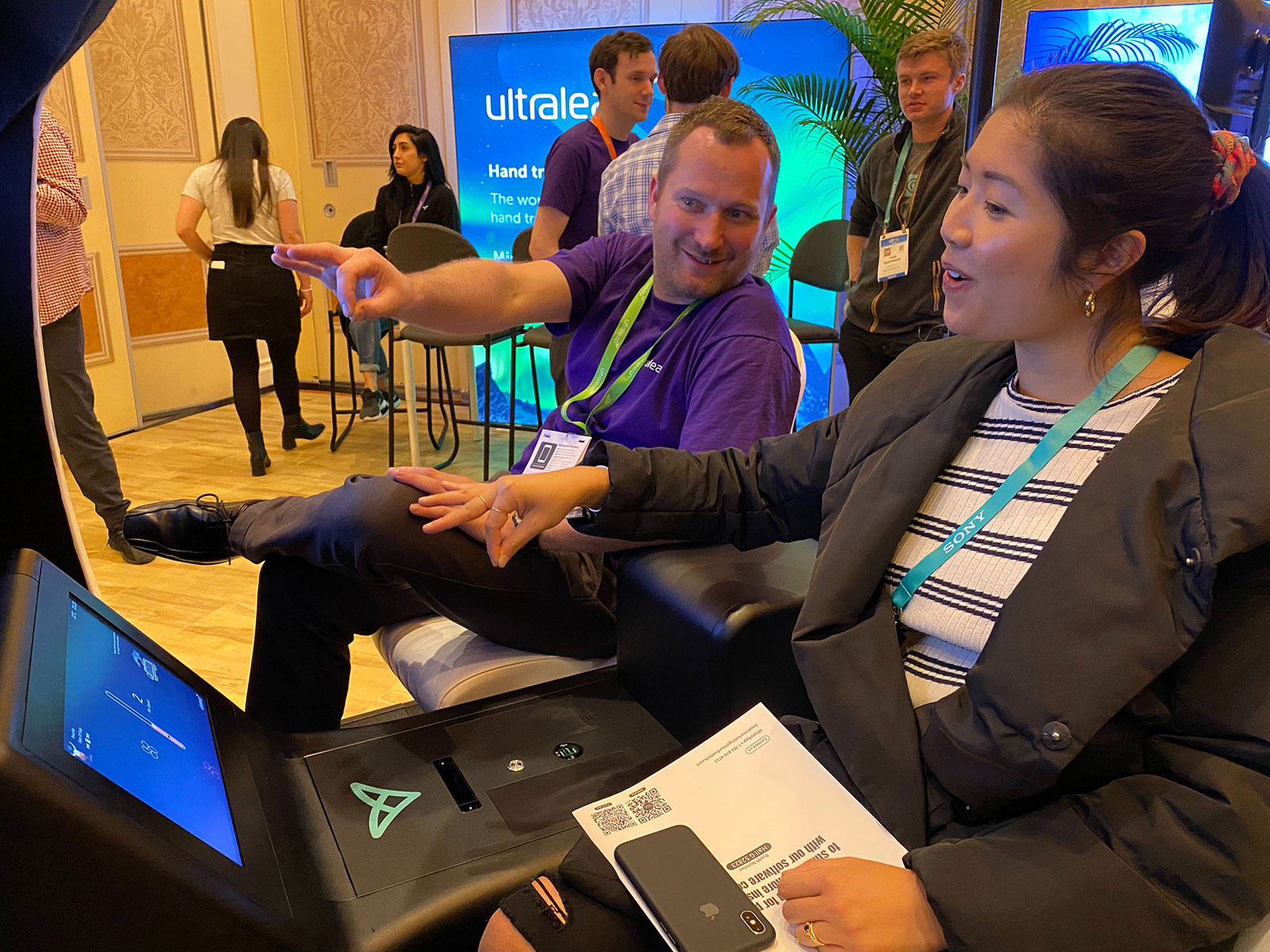
There were concept cockpits not just from automotive manufacturers. A lot of big tech companies were also showing off their automotive platforms and how they integrate into cockpits.
Qualcomm had a big feature, Samsung had a cockpit essentially jam-packed with Samsung tech, and the biggest buzz not just for automotive but for the whole show was from Sony. They surprised everyone by announcing the Vision-S concept car during their keynote. Their cockpit was one of the most elegant and the whole thing looked like something you could drive out of the showroom tomorrow.
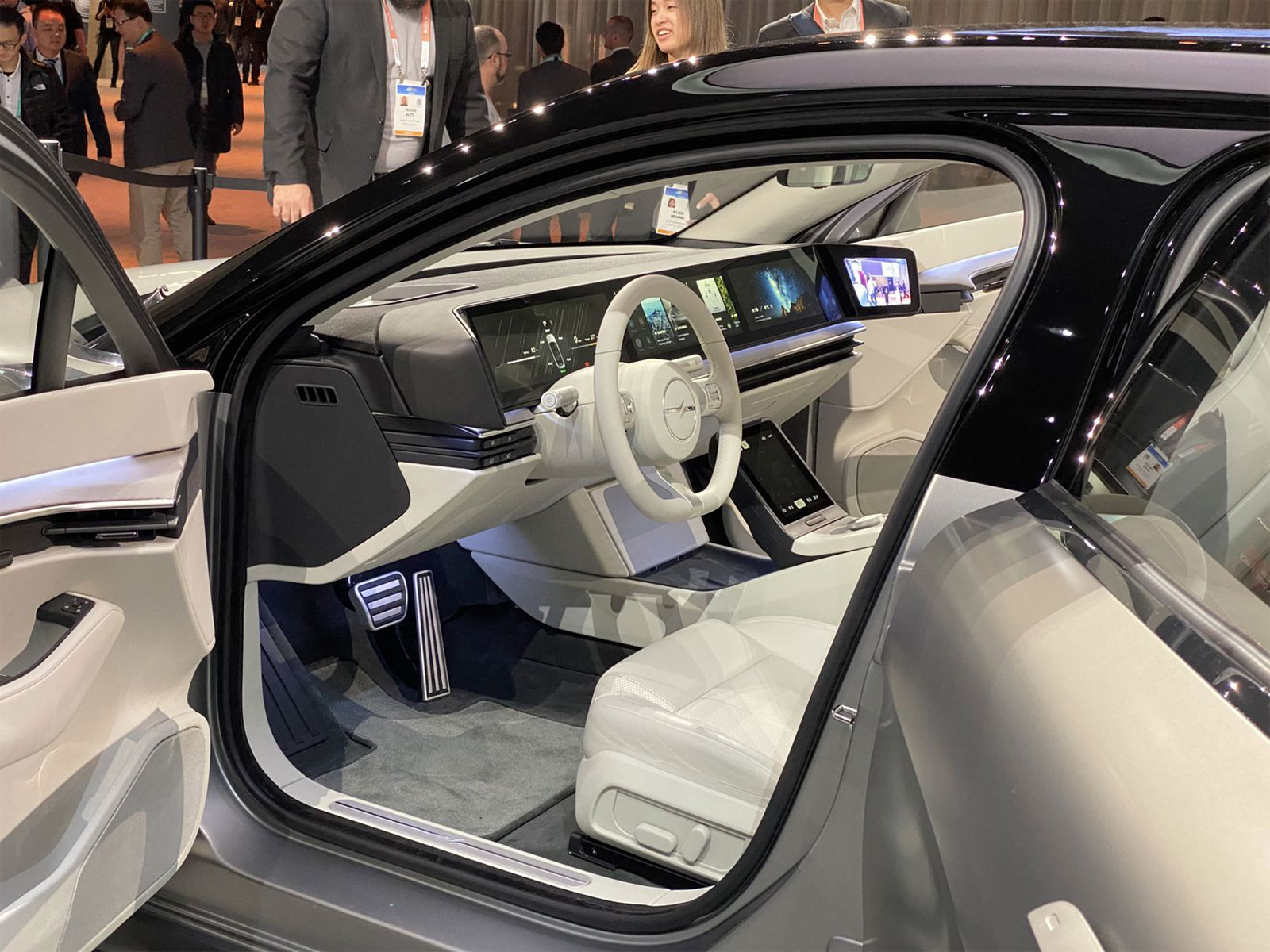
On our own booth, we used VR to imagine the passenger experience in autonomous vehicles. When cars have become mobile offices and entertainment hubs rather than primarily driving experiences, what will being a passenger be like?
XR was about real deals rather than splashy announcements – and playing “spot the Ultraleap tracking”
It feels like consumer VR and enterprise AR hardware is maturing. Possibly for that reason, there weren’t any game-changing announcements, although VRgineers XTAL headset got a good deal of coverage.
Rather than making splashy announcements, XR companies seemed to be doing a lot of actual business. The talk was about deals already signed on the dotted line, solid product roadmaps, and launch dates.
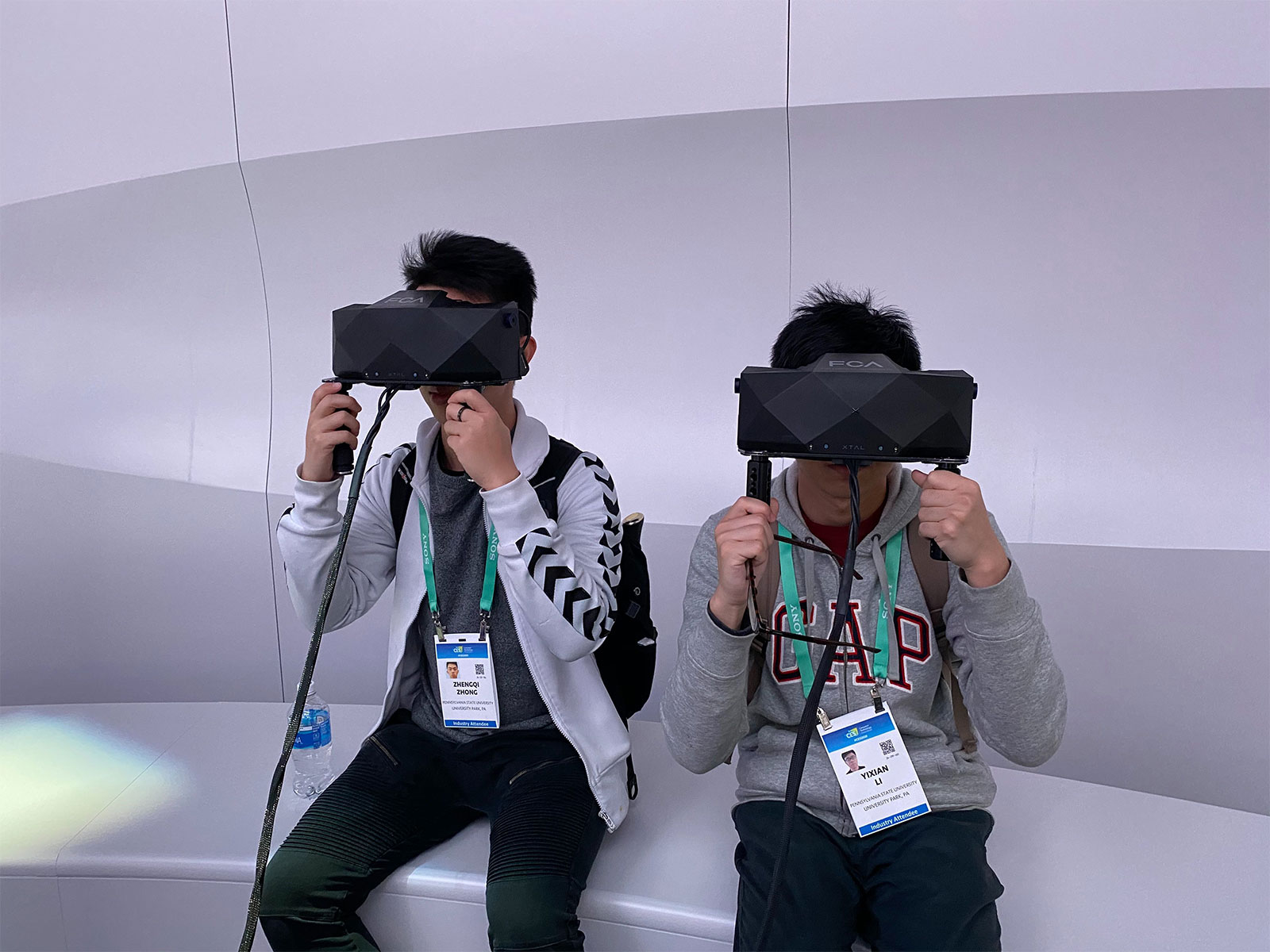
As you move from development to real-world deployment, ease of interaction becomes more and more important. There were lots of sightings of our tracking and haptic technologies in the wild, powering all sorts of XR products and demos.
Ultraleap tracking was embedded in VRgineers XTAL and Varjo’s VR-2 Pro enterprise VR headsets. Both tracking and haptics were in Dimenco/Microsoft’s Simulated Reality 8K glasses-free 3D. Simulated Reality also featured in a concept gaming laptop with tracking from MSI (best-in-show award winners for their GS66 Stealth).
Glasses-free 3D and interaction without controllers seems a natural fit. HyperVSN and Looking Glass were also spotted combining Ultraleap tracking with holographic visuals.
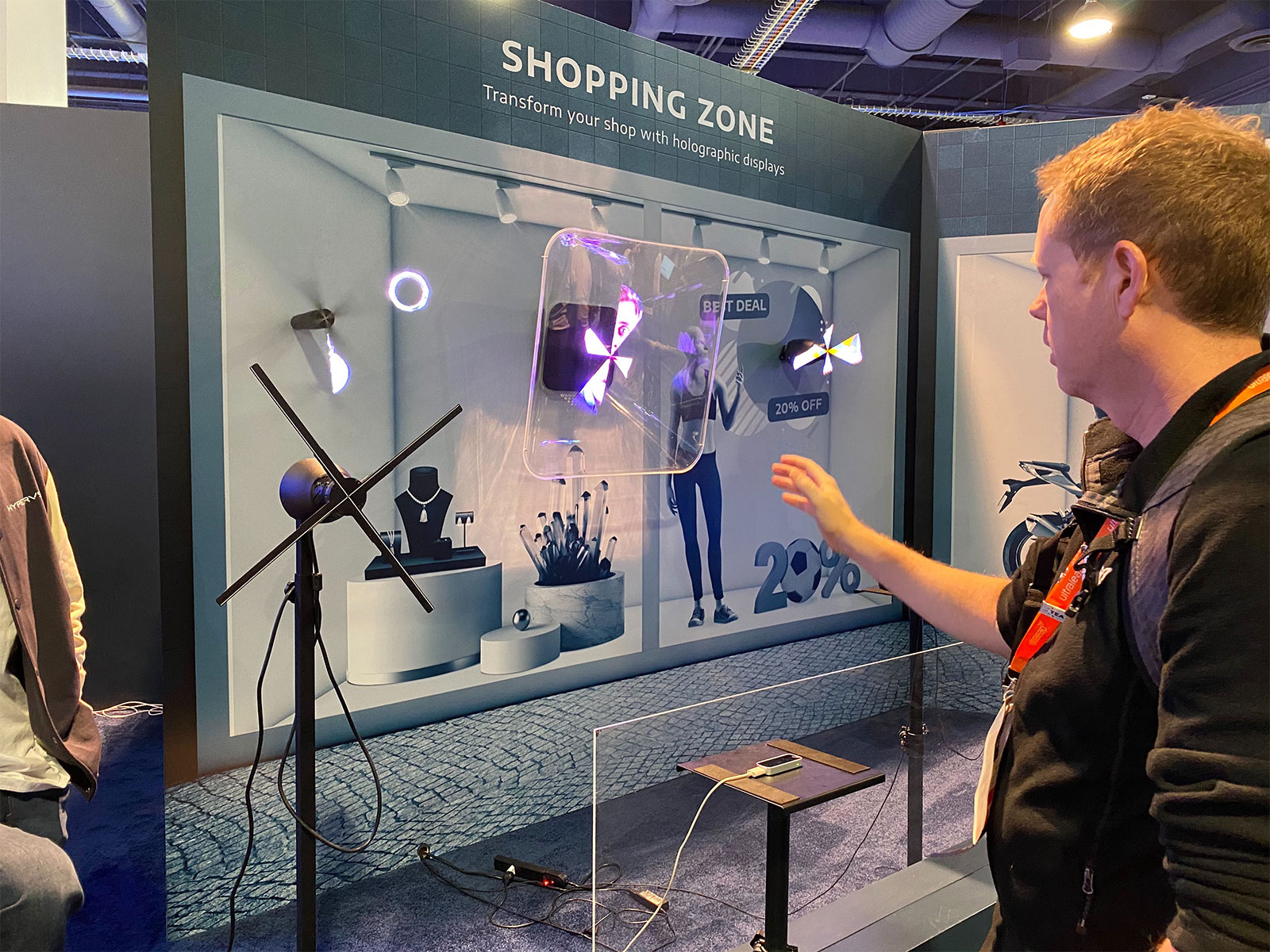
In AR, design firm Luxsoft showcased the Magic Leap heads-up display they collaborated on with Ultraleap. RealMax’s enterprise AR headsets also used our tracking, making a total of no fewer than seven different HMDs at the show powered by Ultraleap tracking.
Haptics shows no sign of slowing down
The haptics juggernaut in general shows no sign of slowing down. Of course, we had our own haptics demos. These included a VR escape room created in partnership with X Studios, and haptic product exploration featuring our own STRATOS Inspire. It showed how adding the sense of touch enhances brand and product promotion.
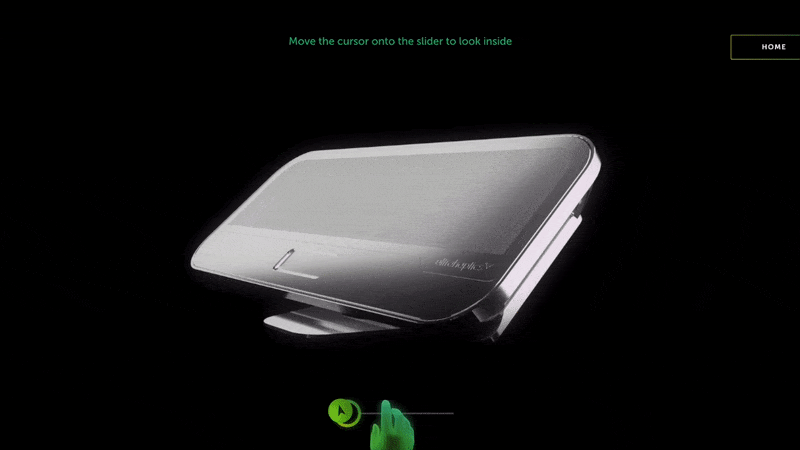
But actually, there was lots of interesting haptic technology throughout the show. Hap2U (my favourite electrovibration company) had a dial demo where they had glued a 3D printed plastic ring onto a haptic touchscreen. They were able to apply the electrovibration effect through the ring, allowing you to feel notches.
Over in the world of haptic wearables, I tried HaptX’s great demo where you control two robot arms and perform a sequence of intricate tasks. Congrats to them as well for winning best in show award from UploadVR.
There were some interesting haptic bracelets as well. Neosensory had a bracelet that picked up sound and converted it into a vibrotactile response on your wrist. The idea is to augment sound with haptic information, for people with hearing loss.
Finally, bHaptics had a large booth for their Tactsuit. It’s a range of Ready Player One style accessories for gaming, which use inflatable air pockets to create haptic feedback (including, amazingly, on your face, via a haptic HMD face cushion).
And finally… a potato
All this was eclipsed, though, by my favourite product of the entire show. A potato.
Remember making a radio powered by a potato? Well, this guy created a smart speaker powered by a potato. You stick it in, connect the phone app and ask the potato for deep, meaningful advice.

So, there you have it! I walked 56.7km over the show looking for the good stuff. The best car was made by Sony and the best gadget was a potato.
Tom Carter started exploring ultrasound technology during the final year of his Masters degree in Computer Science at the University of Bristol. He went on to co-found Ultrahaptics and is now CTO of Ultraleap.